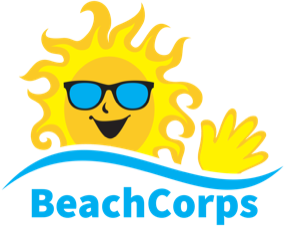Let’s face it. For many kids, Spring Break is a rite of passage. The BeachCorps Beach Bum had a wonderful Spring Break in the pre-Bum years. Though in retrospect maybe that jump off the motel roof into the pool was a bad idea. (Photo: USA Today)
BeachCorps believes that there is a market for a new kind of Spring Break, one that combines the best of the fun of a traditional Spring Break with the best of the learning, personal growth, and social responsibility of the growing Alternative Spring Break movement. For most of the hundreds of thousands of college students who celebrate Spring Break each year, the fun is undeniable. However, many Spring Breakers engage in excessive drinking, use illegal drugs and make bad personal decisions.
What about the Alternative Spring Break (ASB) Movement? An Alternative Spring Break is a trip where a group of college students (usually 10–12 per trip) engage in volunteer service and learning. ASB trips originated with college students in the early 1980s as a counter to traditional Spring Break trips. In 2016, a survey of 168 institutions reported nearly 23,000 students participated in more than 1,600 trips during the 2015-16 school year, according to Break Away, a national nonprofit that provides training and support for the trips. That represented an increase from 16,700 students on 1,300 trips four years before that reported by 130 schools. Even so, the growing ASB movement is still small compared to the more traditional party-based Spring Break and is in no danger of taking over.
BeachCorps Spring Break: The BeachCorps Spring Break in 2018 will combine the best of both worlds:
Fun of Traditional Spring Break: stays in nice hotels, the fun of an all-inclusive and the beach.
No Alcohol or Drug Abuse Policy: Students will place security deposits guaranteeing they won’t drink to excess and will not use any illegal drugs of any kind.
1-3 Days of Volunteering: Depending on the length of their stay, students will support local causes like other BeachCorps trips. These trips can actually complement and support ASB trips from the same schools as BeachCorps volunteers.
Who pays for these trips? Parents. And parents will be far more likely to want to send their child to a BeachCorps Spring break, which will stress alcohol and drug abuse prevention. Many students will also prefer the perfect equilibrium point between a typical rustic alternative Spring Break trip organized by universities and the excess of traditional Spring Break, particularly since their volunteer work will be part of a broader trend with real impact.
A while ago when BeachCorps was testing the market for a new kind of volunteer vacation, we contacted the head of marketing for the Catalonia hotel chain. Like many hotels in the Dominican Republic, Catalonia has a “No Spring Breakers” rule that says during the Spring Break high season they won’t accept reservations from groups that don’t include a person over 21 in every room. Most hotels in the Dominican Republic just don’t want the problems associated with Spring Break. But when BeachCorps told Catalonia about our detailed plan to ensure that kids won’t abuse drugs or alcohol but would instead focus on helping local communities, they waived their policy for BeachCorps. That’s one of the reasons they are a BeachCorps partner hotel. And we promise that if we do a Spring Break with Catalonia, we’ll have a lot of fun. And no jumps off the roof into the pool. 🙂
#For more info on how BeachCorps will ensure our Spring Break 2018 is safe and fun, email: info@beachcorps.com
Photo: Dominican Dream Project, an amazing nonprofit with volunteer programs in the North Coast of the Dominican Republic (where one day BeachCorps will be!)
#SpringBreak #AlternativeSpringBreak #SustainableDevelopment #VolunteerVacation #Voluntourism #AllInclusive #Excursion #SustainableTourism #TravelForGood #Impact



Thanks for the terrific article
Sorry for the delayed response! you are welcome!
Thanks for the wonderful post